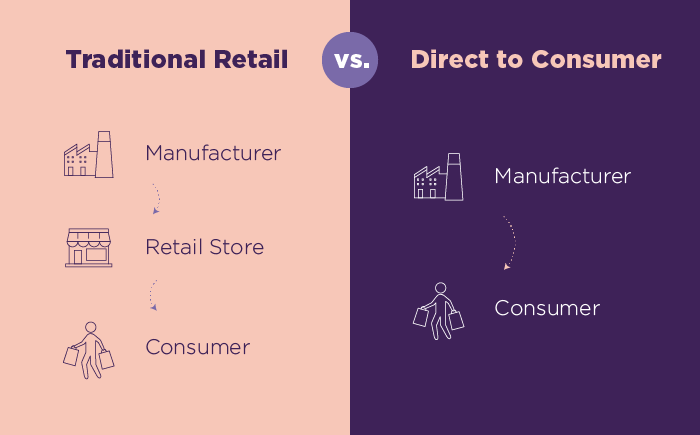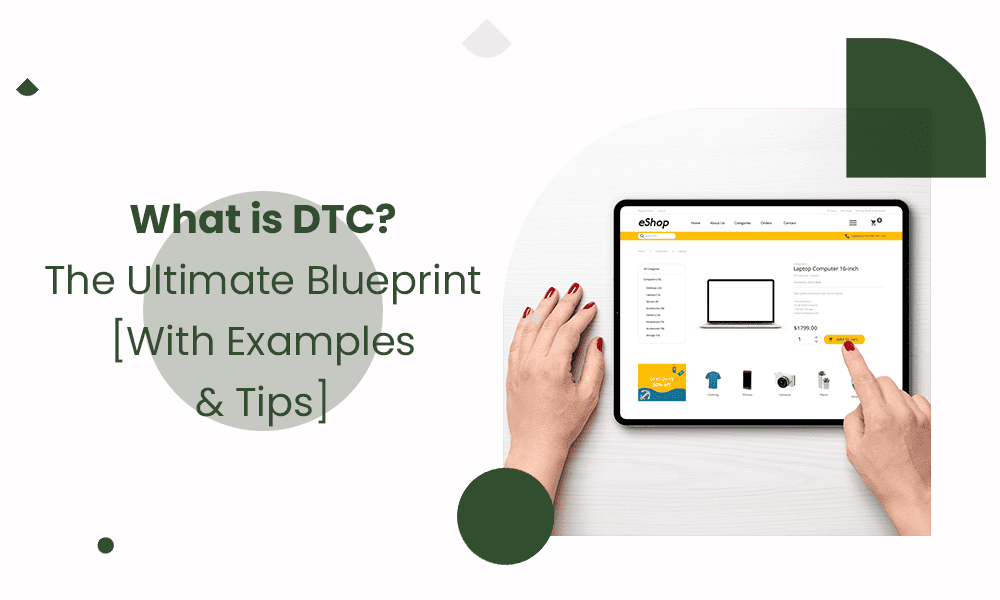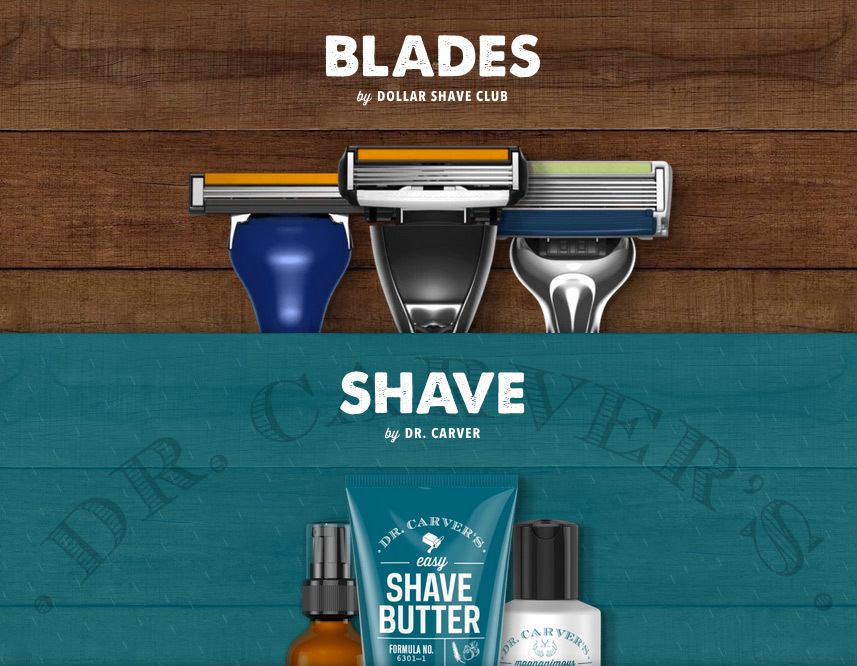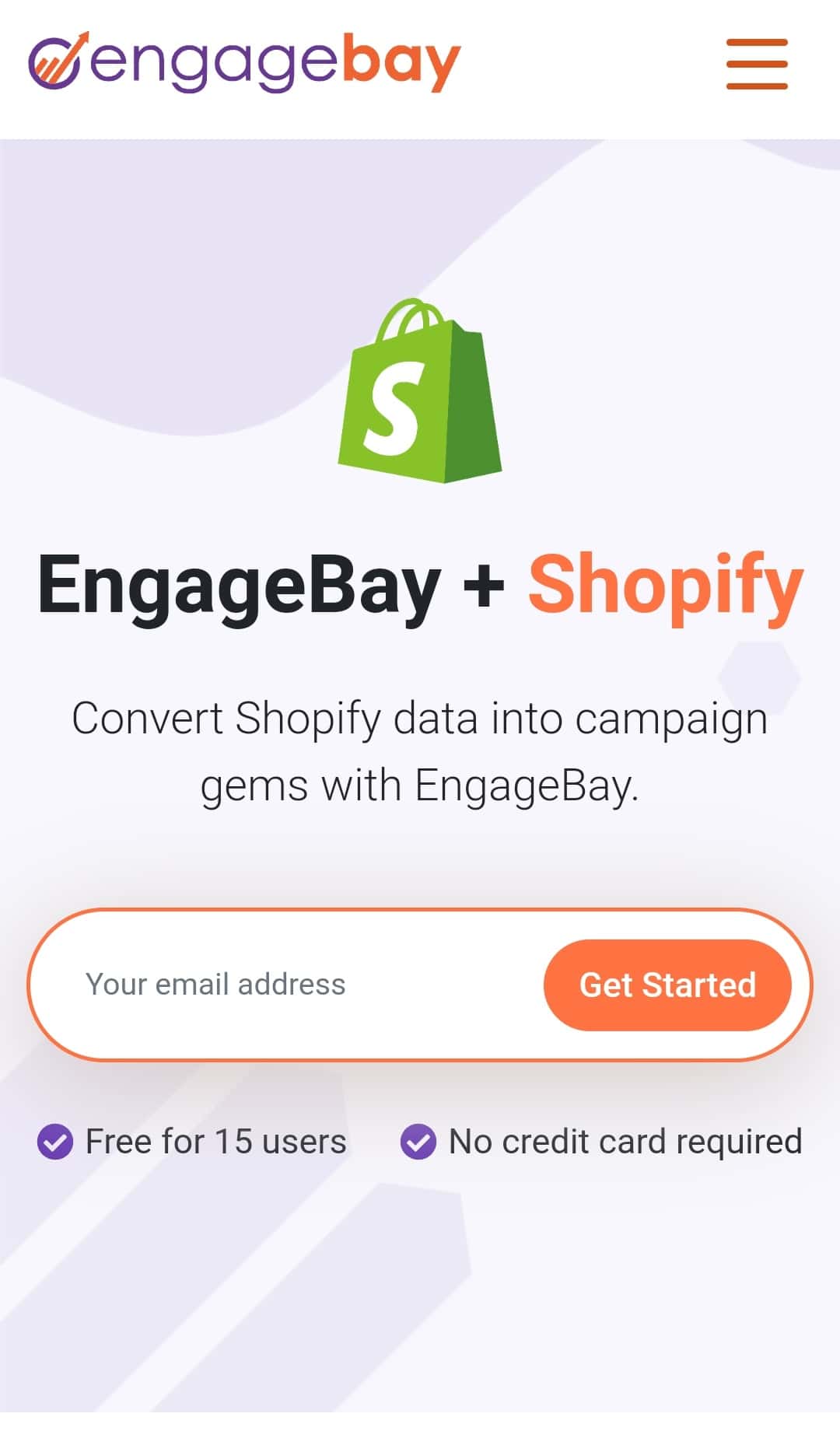Direct-to-consumer (DTC) marketing is becoming increasingly popular and is transforming how businesses reach their customers.
This blog post will explore DTC marketing and why it has become such a powerful tool for businesses. We will also examine different strategies and techniques to leverage DTC marketing.
By the end of this blog post, you will better understand how DTC marketing works and how to use it to help your business succeed.
Table of Contents
Defining DTC
Direct-to-consumer (DTC) marketing focuses on connecting with customers directly rather than using more traditional marketing channels. In DTC marketing, the goal is to build an ongoing relationship with consumers, enabling companies to understand their customers better and cater to their specific needs.

At its core, DTC is about establishing an ongoing connection with the consumer and delivering a personalized experience. DTC marketing strategies can take many forms, from direct mail to email campaigns to targeted ads on social media and other digital channels.
The common thread is that DTC channels allow businesses to reach and interact with their customers on a more individual level.
By using DTC tactics, companies can better understand the wants and needs of their target market and use this knowledge to create tailor-made campaigns that resonate with their customers. Ultimately, this approach can lead to improved customer loyalty, more effective product launches, and increased sales and profits.
Read also: 13 Key Marketing Trends for Small Business Owners
The History of DTC
The concept of Direct-to-Consumer (DTC) marketing has been around for decades, but it has only gained traction recently.
DTC first emerged as a trend in the 1990s when consumer products companies such as Gillette and Proctor & Gamble began to sell products directly to consumers rather than relying on retailers. This move allowed them to have more control over their pricing, marketing, and sales strategies.
In the 2000s, the internet opened up a world of opportunities for DTC marketing. eCommerce websites such as Amazon and eBay allowed companies to reach millions of customers with little effort and cost. The growth of social media platforms also provided brands with an effective platform to reach and engage with their customers.
Today, DTC marketing is becoming more popular than ever before. Many traditional retailers have moved their sales online, enabling them to reach a wider audience and deliver a better customer experience.
DTC startups have become increasingly common as entrepreneurs leverage new technologies to create disruptive and innovative businesses that bypass traditional retailers. This shift has enabled companies to reduce costs and better engage with customers, ultimately leading to increased sales.
Read also: The Tricks of Trade Marketing: 7 Strategies That Work
DTC Today

Direct-to-consumer (DTC) marketing has grown exponentially in today’s digital age. It is now the go-to strategy for various companies and brands, from startups to established industry giants. DTC marketers have taken advantage of digital platforms and tools to reach more customers and create personalized experiences that were not possible before.
Companies use digital channels to optimize the customer experience in today’s DTC landscape. Social media, email marketing, and even search engine optimization are all tools used by DTC marketers to reach their target audience and provide an unforgettable customer experience.
Additionally, brands can leverage AI-powered technologies such as chatbots, personalized recommendations, and automated customer service to make customer interactions more efficient and effective.
DTC marketers are also using data-driven insights to make more informed decisions. By leveraging advanced analytics and customer data, companies can measure the success of campaigns, track customer behavior, and adjust marketing strategies accordingly. Furthermore, companies can use customer data to create targeted campaigns that speak directly to the interests of their customers.
Overall, DTC has changed the way companies market their products and services. With the right strategies in place, companies can reach more potential customers and provide a personalized experience that leads to better relationships and increased loyalty.
11 Affordable, Powerful Customer Journey Mapping Tools
The Pros and Cons of DTC
The DTC model has many amazing benefits, like the following.
- DTC allows brands to reach consumers directly and engage with them in ways that weren’t possible before. This type of marketing can be incredibly powerful and efficient, allowing brands to build strong relationships with customers and drive significant sales growth.
- DTC marketing enables brands to test new products or ideas quickly and effectively. With traditional retail stores, brands would need to invest a lot of time and money into launching a new product or idea. However, with direct-to-consumer marketing, brands can quickly create small batches of products and test them out without having to commit to a large production run. This can allow brands to make further decisions about what products they should pursue.
- Finally, engaging in DTC marketing allows brands to collect valuable data on their customers that they can use to improve their marketing strategy. By tracking customer behavior and engagement, brands can gain valuable insights into their customers’ likes and dislikes. This can help them tailor their products and services in the future and ensure they remain relevant to their target audience.
However, the DTC model also presents some potential risks and drawbacks.
- The most notable is the cost associated with setting up and managing a direct-to-consumer business. In addition, brands must devote significant time and energy to developing a strong online presence, which includes optimizing their website for search engine visibility and creating high-quality content that resonates with their target audience.
- In addition, there is the risk of customer dissatisfaction with the product or service. With the DTC model, customers engage with the brand directly, so any negative feedback or reviews are more likely to be seen. This can lead to a decrease in sales or even a reputation crisis.
- Finally, there is the competition factor. With so many companies now utilizing the DTC model, the marketplace has become saturated, making it difficult for new players to gain traction. Companies must constantly innovate in order to remain competitive and stay ahead of the curve.
Overall, it’s important for brands to carefully weigh the pros and cons of this model before jumping into it, as it can be costly and time-consuming to set up and manage. With careful planning and consideration, brands can make the most of their DTC efforts and reap the rewards.
Read also: 12 Creative Small Business Marketing Ideas That Work
How DTC is Changing the Marketing Landscape
The rise of Direct-to-Consumer (DTC) marketing has changed how companies market their products and services.
DTC gives companies direct access to their customers, which means they can quickly gain feedback on their products and make necessary improvements. This eliminates the need for expensive traditional advertising campaigns and saves time on market research.
DTC also allows companies to customize their marketing efforts and create unique customer experiences. Companies are able to target specific customer segments and tailor their messages accordingly. This helps ensure that their message is received by the right people and increases the chances of it resonating with customers.
One of the biggest advantages of DTC is that it allows companies to measure the success of their campaigns more accurately. With traditional campaigns, measuring ROI can take time and effort.
With DTC, companies can use analytics to track how many people visit their website or purchase a product from them, giving them an accurate picture of their campaign’s effectiveness.
Overall, DTC is changing how companies market their products and services. By giving companies direct access to their customers, allowing them to customize their campaigns, and providing better tracking capabilities, DTC is revolutionizing marketing.
What is Cost Per Action (CPA)? Benefits, Challenges, and Tips
Comparison of DTC, Wholesale, and Retail

Direct-to-consumer (DTC) refers to businesses that sell products or services directly to the customer without the need for intermediaries. This model allows companies to have more control over the customer experience, maintain more control over pricing and product presentation, and reduce costs associated with the traditional retail supply chain.
On the other hand, wholesale is when businesses buy goods from a manufacturer or supplier at a discounted rate and then resell them to retailers or other third parties. This model generally involves lower costs and is often used by companies who want to expand their distribution network rapidly.
Retail is when businesses sell products or services directly to customers through physical stores, online stores, or even mobile applications. This model is typically used by companies that want to give customers an engaging in-person shopping experience and gives them the ability to customize their offerings based on customer feedback and preferences.
When it comes to comparing DTC, wholesale, and retail, there are several key differences.
- DTC offers brands more control over their product, message, and data, whereas wholesale and retail offer less control. DTC also offers brands a direct connection to their customers, whereas wholesale and retail involve working with intermediaries. Lastly, DTC often requires more investment upfront than wholesale and retail but can lead to more profitable long-term outcomes.
- Additionally, while traditional wholesale and retail businesses have struggled due to online competition from eCommerce businesses, DTC businesses have been able to remain competitive due to their ability to react to changes in the market quickly. For example, many DTC companies have started offering subscription services for their products, which has allowed them to capture recurring revenue from customers.
- Furthermore, since DTC businesses do not need to rely on outside entities for their success, they have more freedom to experiment with new technologies, pricing strategies, and even manufacturing processes. As a result, many DTC businesses have scaled faster than traditional wholesale and retail models.
Regardless of your chosen channel, it’s essential to understand all the options available and make an informed decision that works best for your business.
Read also: 17 Fresh eCommerce Marketing Ideas to Dominate Your Niche!
10 Best Practices to Follow in DTC Marketing
You should follow certain best practices to get the most out of the DTC model. These are:
1. Keeping your customer first
DTC brands should always prioritize their customers and provide them with the best possible experience. This means understanding their needs, creating customized offerings, and staying updated on customer feedback.
2. Investing in data analysis
Data is essential to effective DTC marketing. Investing in tools that help you collect data, analyze it, and create actionable insights will help you develop better strategies and target the right customers.
3. Building a strong brand identity
Developing a strong brand identity will help differentiate your brand from others in the market. Focus on creating a unique value proposition and ensure it’s communicated through all channels, including website design, social media, product packaging, and advertising.
4. Leveraging social media platforms
As a DTC brand, social media is a great tool for communicating with your customers and building relationships. Utilize different platforms like Instagram, YouTube, and Facebook to showcase your products and services, engage with customers, and drive sales.
5. Creating an omnichannel experience
Creating a seamless, omnichannel experience for customers is essential for DTC brands. Make sure that your customers have easy access to all of your products, no matter what channel they’re using.
Read also: Top Retail Marketing Strategies To Boost Customer Loyalty (Trends and Tips)
6. Utilizing user-generated content
User-generated content can help you build trust with potential customers by showcasing real people using and enjoying your products. Encourage customers to share their experiences on social media and use those posts in your own campaigns.
7. Optimizing your website
Optimizing your website is essential for success. Ensure that your website loads quickly, is easy to navigate, and has a clear call-to-action, so customers find it easy to buy your products.
8. Tracking the key performance metrics
It’s important to track key performance metrics like cost per acquisition, customer lifetime value, and customer satisfaction to understand what’s working and what needs improvement.
9. Leveraging new partnerships
Partnering with other businesses in related industries can help you reach new audiences and grow your customer base. Find partners with similar values and goals and create mutually beneficial relationships.
10. Testing & iterating
The only way to determine what works for your brand is to test different strategies and iterate on the successful ones. Try different tactics, measure their performance, and make adjustments as necessary.
2023 Guide to Email Marketing for eCommerce
5 DTC Brands Hitting The Nail on Its Head
Here are five contemporary examples of brands making the most of the DTC model.
1. Bonobos
Bonobos is a clothing company that offers an eCommerce model for men’s apparel and accessories, focusing on convenience, quality, and fit. The company has experienced explosive growth since its launch due to its innovative approach to the direct-to-consumer (DTC) industry.
Through its various strategies, Bonobos has transformed the DTC industry by providing a shopping experience tailored specifically to each customer’s needs.
The company’s success can be attributed to its focus on convenience, quality, and fit, all of which are integral components of successful DTC brands.
2. Warby Parker
Warby Parker is an eyewear company that sells glasses directly to consumers by cutting out the middleman, allowing them to offer glasses at a much lower cost than traditional brick-and-mortar stores.
What sets Warby Parker apart from other DTC brands is the level of personalization they provide. Customers can order prescription lenses that are customized to their individual needs and tastes.
By providing a more personalized and convenient shopping experience at a lower cost, Warby Parker has changed the way we shop for glasses.
In doing so, they have set a new standard for being a successful direct-to-consumer brand.
3. Everlane
Everlane is a DTC (direct-to-consumer) apparel brand that has revolutionized the fashion industry since 2010. Through its direct-to-consumer model, Everlane has been able to create a line of apparel that is both affordable and high-quality without sacrificing its ethical principles.
Everlane has changed the way consumers shop for clothing. By cutting out intermediaries, the company can offer customers the same quality clothing at up to 50% lower prices than traditional retailers.
Additionally, the company has made transparency a cornerstone of its business model. Everlane offers detailed information about the materials used in each product and where they are manufactured, so customers know exactly what they’re getting.
Overall, Everlane has changed the DTC industry by providing customers with affordable, quality apparel that is ethically produced and environmentally friendly.
By cutting out intermediaries and being transparent about its processes, Everlane sets a new standard for how fashion companies can conduct business.
4. Dollar Shave Club
Dollar Shave Club, one of the most recognizable DTC brands, gained a huge following and millions of customers in a relatively short period due to its clever and humorous marketing. They offer an array of male-oriented products ranging from razors and shaving cream to body wash and lotion.
Dollar Shave Club disrupted the DTC industry by challenging big-name brands like Gillette and Schick, creating an affordable subscription service tailored to men’s shaving needs.
Rather than opting for traditional advertising methods, they released a series of viral videos on YouTube that poked fun at the conventional shaving industry and garnered millions of views.
Dollar Shave Club has become a leader in the DTC industry, changing how consumers buy grooming products forever. They have inspired countless other DTC brands to follow their lead and use digital marketing strategies to grow their customer base.
5. BirchBox
Birchbox is a unique DTC brand that has revolutionized how consumers shop for beauty products. It allows customers to try out high-end beauty products at home before committing to a full-size purchase. Customers pay a monthly subscription fee and receive a curated box of five sample-size products every month.
The success of Birchbox has transformed the DTC industry. The subscription box model has become increasingly popular among other DTC brands, which can now provide customers with tailored product experiences without making a major investment in the physical retail space.
Additionally, many brands are incorporating the hybrid approach that Birchbox pioneered, allowing customers to purchase products outright or try them out through a subscription box.
Overall, Birchbox has been an incredible success story and has had a major impact on the DTC industry. Its unique business model has allowed it to stand out from the competition and allowed customers to discover new products in an entirely new way.
As the DTC industry continues to grow, there’s no doubt that Birchbox will remain an important part of the landscape.
The 5 Best eCommerce Platforms for Startups
Touch New Heights In Your Business With the EngageBay–Shopify Integration
DTC marketing has enabled businesses to bypass traditional intermediaries, allowing them to connect directly with their customers and decide how to market their products best.
EngageBay has taken it a step further with its native Shopify integration. This integration allows DTC businesses to leverage all of the features of the Shopify platform while taking advantage of the advanced marketing capabilities of EngageBay.
With the integration, businesses can now build better relationships with their customers by engaging with them on a personal level, automating customer journey marketing, and optimizing campaigns for maximum returns.
The EngageBay-Shopify integration also helps DTC business owners increase their sales by allowing them to quickly and easily create targeted offers for their customers.
With this integration, business owners can create personalized offers based on their customer’s purchase history and interests, leading to higher conversion rates.
Additionally, the integration gives business owners access to powerful tools like A/B testing and segmentation to ensure that they are targeting the right customers at the right time.
Finally, the integration helps business owners get insights into their customer’s behavior.
With access to detailed analytics, business owners can understand who is buying what, what campaigns are working and which ones aren’t, and what types of offers their customers respond to best.
This allows them to adjust their marketing strategies in real-time to ensure maximum effectiveness.
In short, EngageBay’s native Shopify integration helps DTC business owners streamline their marketing operations while driving better results.
By leveraging the advanced features of EngageBay, business owners can now create highly personalized experiences for their customers that result in increased sales and higher ROI.
Convert Shopify data into campaign gems with EngageBay.
Conclusion
Direct-to-consumer marketing is an incredibly powerful tool for businesses to reach their customers directly. It removes the middleman, allowing companies to more accurately control their messaging and branding and access more data about their customers.
While there are still challenges to overcome when it comes to this type of marketing, its advantages make it worth the effort. With its advantages and potential for growth, direct-to-consumer marketing is here to stay, and its continued growth will undoubtedly shape the future of shopping for years to come.






